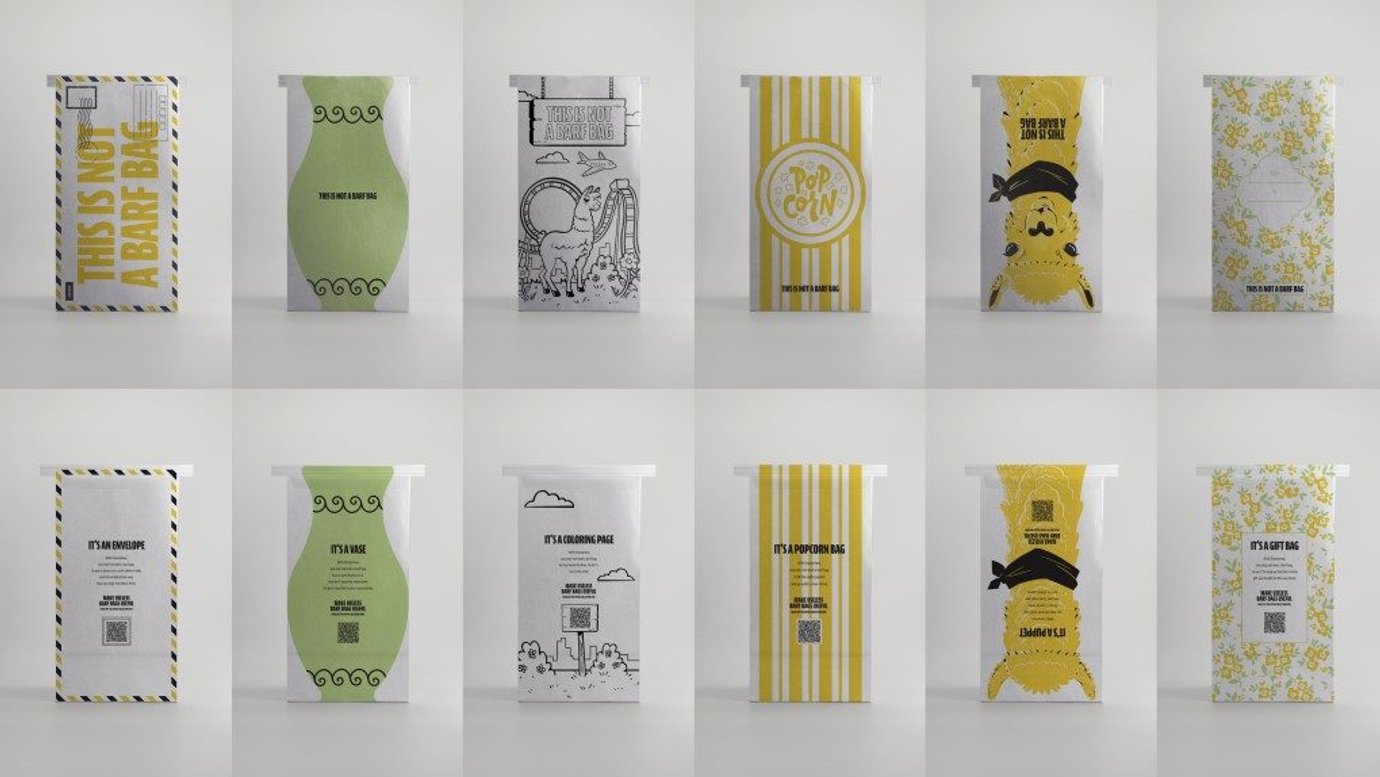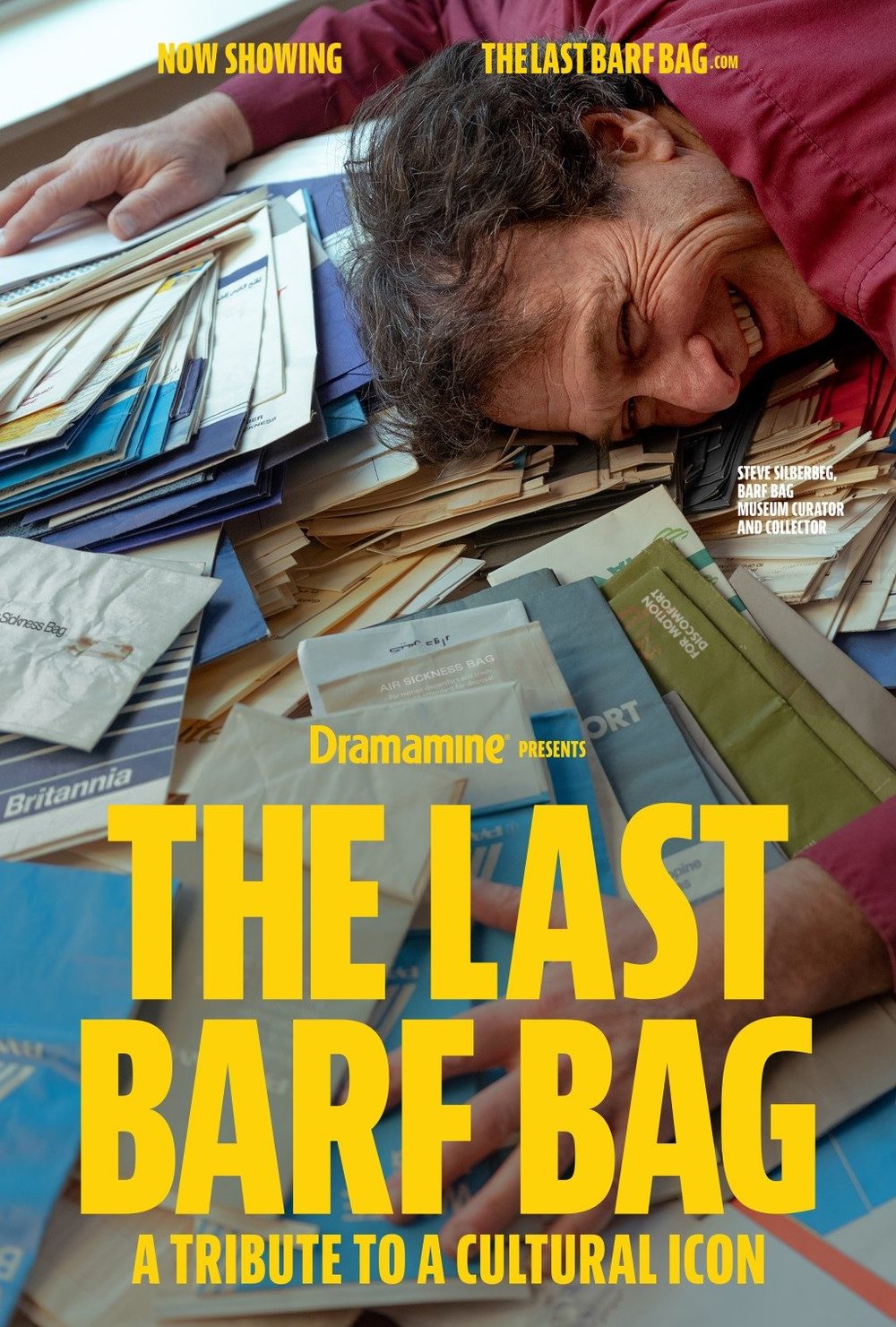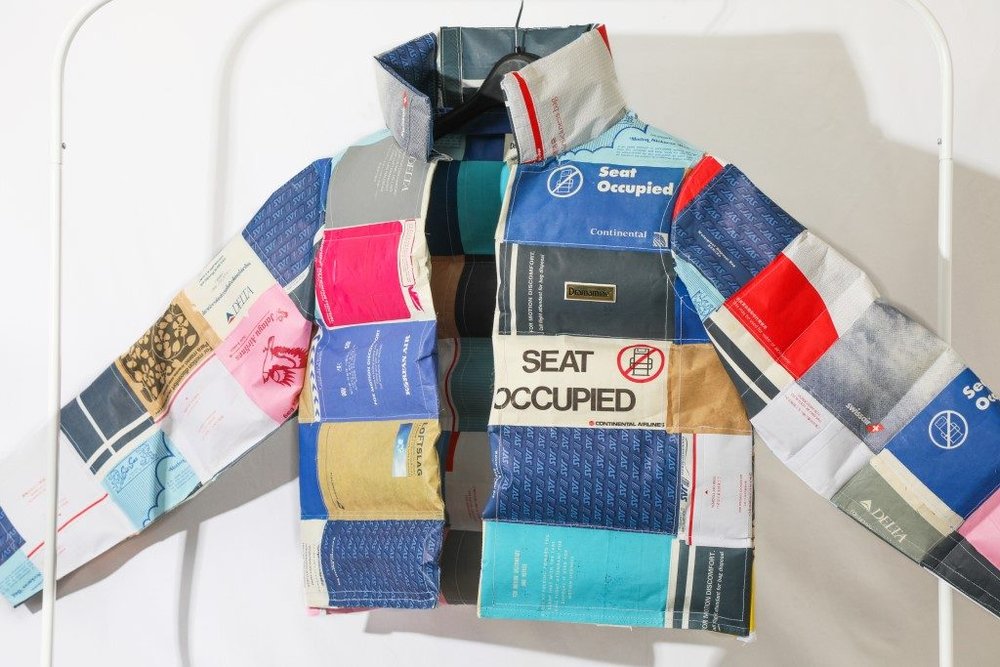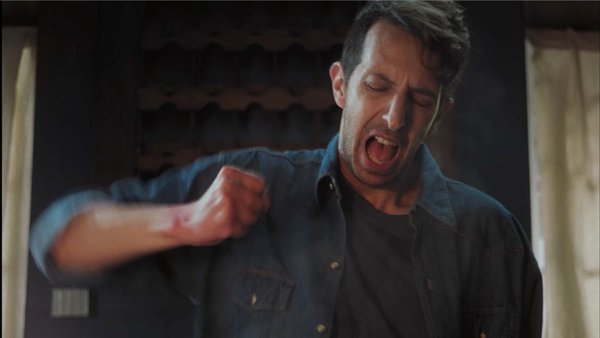Campaign of the Week
Healthcare company makes barf-bag documentary to promote motion sickness medicine /
Dramamine flexes its effectiveness by creating an ode to the sick bags it claims it has made obsolete

To celebrate the 75 year anniversary of the launch of Dramamine, a nausea relief and motion sickness prevention drug, the brand has created a campaign dedicated to a product that Dramamine’s effectiveness has helped to make obsolete – the barf bag.
The integrated campaign kicked off with a documentary that dropped on Dramamine’s YouTube channel called The Last Barf Bag: A Tribute to a Cultural Icon. The educational short film is a 14-minute dive into the history of the invention, which first launched the same year that Dramamine hit the market in 1949.
The film features doctors, flight attendants, historians and ordinary people reflecting on the bag, and also shares the stories of the passionate barf bag collectors who have amassed thousands of designs from airlines across the years.

Hundreds of the most historic and rare barf bags dating back over five decades were also displayed in a New York City pop-up exhibition for one day only on April 3, the same day the documentary was released online.
The final core element of the whole campaign, which was developed by agency FCB Chicago, was to save barf bags from extinction by launching what it called the ‘This is Not a Barf Bag’ collection.
The collection is a selection of repurposed barf bags available from Dramamine’s online store that suggest an alternative use for the product by the design on the bag, including using it as a puppet, chef’s hat, glove, envelope, vase, popcorn bag and as a cooler. Each bag is being sold for $5, but a $10 option is available too that includes a sample Dramamine product.

The designs on the upcycled repurposed bags were created by artist Jessie Maxwell Bearden, who also made a unique one-of-a-kind puffer jacket made out of old barf bag designs. The jacket was initially displayed at the New York exhibition before being given away on 17 April to one lucky browser on the Dramamine online store.
Contagious Insight /
Reflux flex / Dramamine’s The Last Barf Bag campaign offers a creative and unexpected way for the brand to reinforce the effectiveness of its products and its market-leading position in the US. According to Dramamine, it is the number one pharmacist-recommended brand for fighting motion sickness – making the brand somewhat of an authority figure of the subject and quietly confident in claiming that its effectiveness has been a factor in the demise of barf bags.
One of the clever aspects of this campaign is that the pharmaceutical brand anchors the effectiveness of its nausea relief product against a much less pleasant alternative – being sick into a paper bag. For people who do get nauseous while travelling, especially on boats or aeroplanes, the sick bag provides a quick and convenient solution to those who need it. But it’s also an unpleasant, somewhat embarrassing and difficult-to-dispose-of option. By framing Dramamine in contrast to a grizzlier alternative, not only does the brand demonstrate its efficacy, but also makes a credible competitor appear worse in comparison.
If you’re looking for inspiration and insights about how to best choose an antagonist for your brand, check out our Pick An Enemy creative tactic here.
Vomit comet / Even on a good day, barf bags are not breaking into the cultural zeitgeist and earning media attention. But the very success of Dramamine’s creative concept relies on the brand making barf bags feel like a cultural icon and worth talking about. Therefore it’s particularly astute for Dramamine to go for an integrated marketing approach with many diverse (but connected) touchpoints to get this story into the limelight. The experiential component resulted in The Last Barf Bag being covered by City Guide NY, the bespoke jacket broke the story into the New York Post, and the documentary caught the eye of Fast Company.
In general, it’s much simpler and more effective to choose a moment in the cultural calendar that works best for your idea or base it on something that people will naturally want to share. But that’s not always easy, especially when you’re dealing with low-interest subjects such as motion sickness medication and barf bags. However, a strong, effective and integrated media strategy – as demonstrated here with The Last Barf Bag – can make all the difference in transforming a story into something that various media publications want to talk about.
Want more of the same? /
We don’t just write about best-in-class campaigns, interviews and trends. Our Members also receive access to briefings, online training, webinars, live events and much more.







